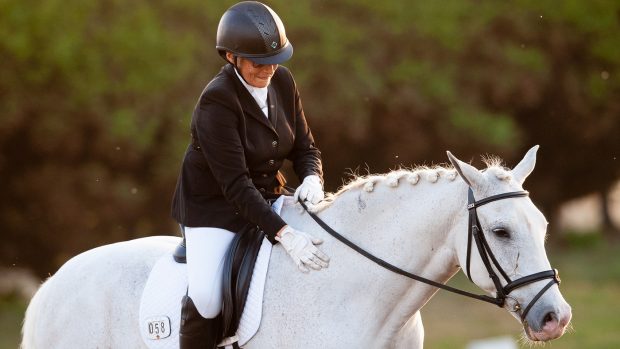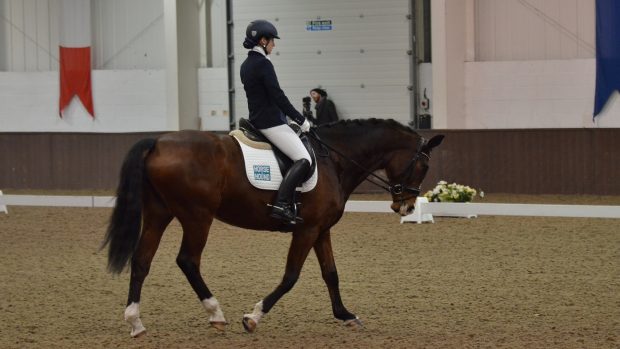Without a decent topline, your horse cannot be truly athletic and move and jump to the best of his ability. Developing the right muscles along the horse’s back enables him to use his body effectively, carry the rider’s weight and achieve the movements we ask of him. Helen Triggs asks experts from different fields for their top tips to help develop a horse's topline
The physio
Osteopath Kate Lockwood offers ‘Pilates for Horses’ courses to help owners build their horses’ physiques from the ground.
“Remember that no one muscle works alone — they work in groups, chains or pairs. The topline means the dorsal chain that sits above the spine and behind the hip and includes the neck extensors, spinal erector muscle and hip extensors. They all help forward motion.”
“But just as important is the ‘bottom line’ – the chain of muscles which goes from under the spine to the front of the hip and includes the abdominal muscles and make up a large part of the horse’s core.”
Tip 1
“I recommend a session with an equine osteopath or other qualified practitioner who can show you the best stretching exercises to do with your horse from the ground. Or buy a book such as ‘Activate Your Horse’s Core’ by Stubbs and Clayton, which will give you a lot of illustrated exercises.”
Tip 2
“Walking in a purposeful manner in a long and low frame up hills and over raised poles will utilise all the muscles in both chains.”
The nutritionist
Dodson & Horrell’s veterinary surgeon and nutritional team manager, Dr Chloe Casalis de Pury, MA(Cantab) VetMB MRCVS advises owners that diet can help in the muscle-building process, but without proper exercise the excess nutrients will simply be excreted.
“Good quality protein and amino acids are essential to build muscle, but the exact quantity will depend on age, body type and kind of work. Hay and haylage may not provide all the protein required. Alfalfa and soya are some of the best sources. Lysine is an important amino acid as it is the first one to limit muscle development — it is often added in performance feeds,” says Chloe.
“Anti-oxidants vitamins E and C are also important in repairing the muscles after use by mopping up excess free radicals and can help prevent stiffness after exercise.”
Tip 1
Instead of using molassed straw chaff, use one which is alfalfa-based. If your horse does not get a full daily ration of a complete feed, supplement with a balancer.
Tip 2
Make use of the nutrition service provided by feed companies. They can check your horse’s existing diet and suggest ways of ensuring they have the correct level of nutrients.
The trainer
Working on the basic way of going in a correct way will help performance in all disciplines. Simon Battram trains a wide variety of riders and their horses.
Tip 1
“I believe in working horses long and low to release the muscles of their topline to allow the back to swing and make them more supple and loose. The head should not be curling backwards; the face should be on the vertical at the lowest point of the stretch. Whether the horse is being lunged or ridden, I still want the frame to have all the ingredients of a working pace — contact, balance, forwardness and rhythm, enabling the hind leg to come forward and under.
Tip 2
“Too often I see round necks that are bulging and tending backwards. When you pick up the working paces, think of pushing the ears out, not pulling the nose in.”
The rider
Dressage rider and trainer Anna Ross (pictured top) endorses the importance of correct feeding and ridden exercise, alongside working in hand. “We feed our horses yearling cubes to build them up and design specific exercise routines to suit the individual,” she says.
Tip 1
“We take our horses to nearby gallops with an incline. We don’t let them off the contact, but always keep them in a frame. We work up the hill at all three paces.”
Tip 2
“Walking over poles gets the horse to lift his back. In the school we use exercises that help the horse develop such as shoulder-in and canter-walk-canter but it depends on their stage of training and level of strength. The most important thing is regular, organised training and building up slowly.”




